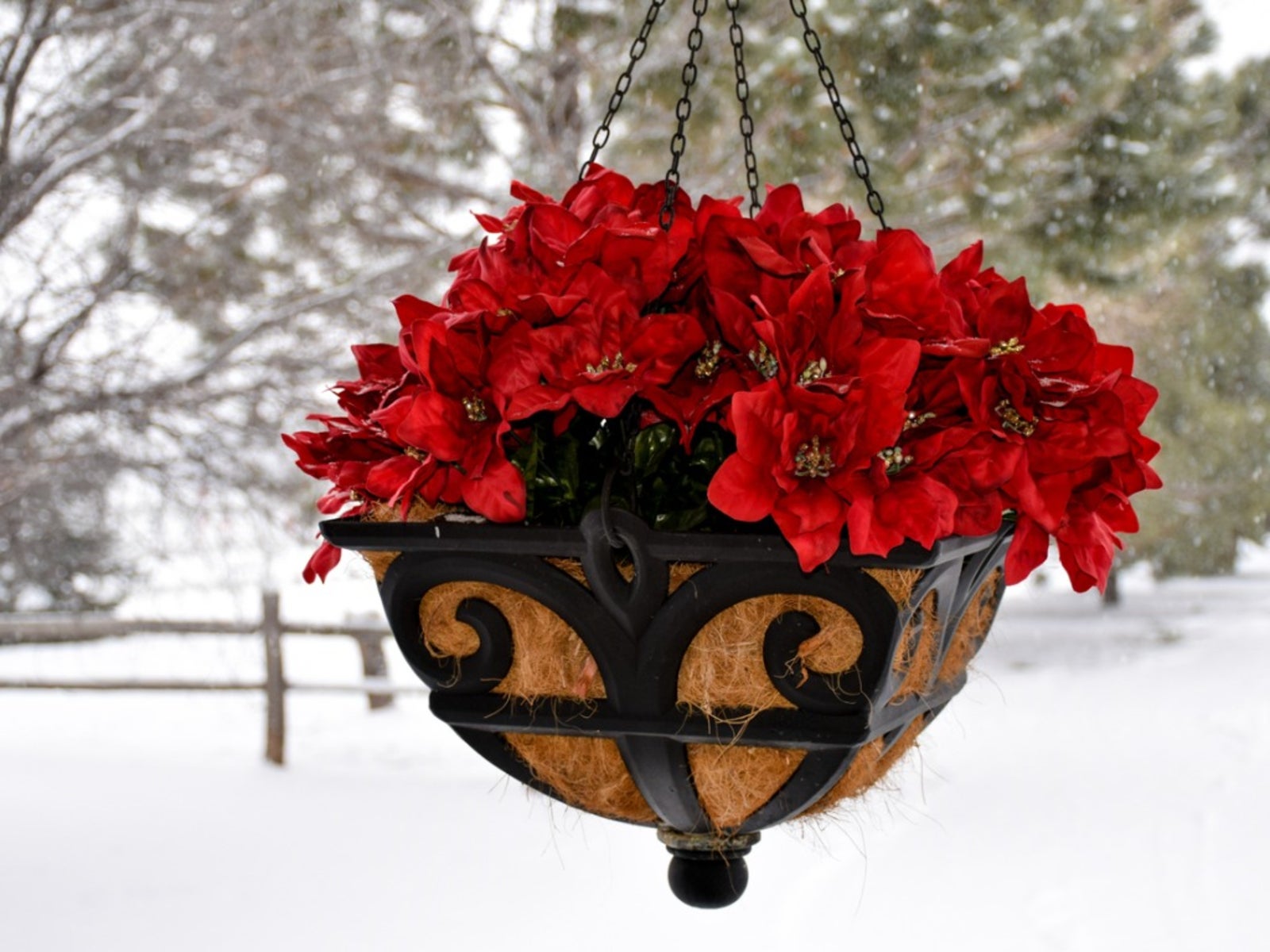Winterizing Hanging Baskets: How To Protect Hanging Plants From Frost Or Freezing


Hanging baskets need a little more TLC than in-ground plants. This is due to their exposure, the small confines of their root space and the limited moisture and nutrients available. Winterizing hanging baskets before the cold arrives is a necessary step to protect exposed roots from freezing. Fortunately, overwintering plants in hanging baskets isn't tricky and it can help to ensure longevity and seasonal interest long into the new year.
There are several easy solutions to protecting hanging plants from frost, and will depend upon the level of cold exposure a plant will experience. Areas that receive light cold snaps won't have to worry about protecting hanging plants as much as those in extreme cold regions, but tender plants in any area will need some special attention.
How to Protect Hanging Baskets from Frost
Protecting hanging baskets near the end of the season (or even early on) can help extend their life. Some steps you can take to prevent frost damage to hanging plants are simple and quick, while others require a little more effort and planning. Even the laziest gardener can throw a garbage bag over a hanging display to help insulate it and protect it from frost, but only the most dedicated gardener will heal in their pots. The amount of effort you make is strictly up to you but, in most cases, you can save your delicate hanging basket from inclement weather. A few tips on how to protect hanging baskets from frost can help ensure your success in preserving your beautiful aerial plant displays.
Winterizing Hanging Baskets
Unless you tend to treat your plants as annuals, you are probably already aware of the necessity of protecting hanging plants from frost. There are many special covers available to protect plants from icy temperatures. These are useful barriers between the outside world and the plant's foliage and roots. They offer a slightly warmer situation and can preserve the core of the plant from freezing and dying. However, some of these professional covers can be expensive, especially if you consider that they are only used for a short period annually. Here are some of the best ways to keep your hanging baskets safe in winter.
1. Keep Baskets Low
It is useful to remember that plants hanging in the air are exposed to a lot more wind and cold temperatures than those in ground. For that reason, the very first step to take when freezing temperatures are threatening is to lower the planter to the ground. The closer to the earth, the more it can share some of that slightly warmer temperature and help protect the roots.
2. Cover Plant
Southern gardeners still need to worry about brief freezes, but northern gardeners really have to plan ahead for extreme weather and long durations of snow and ice. For quick cold snaps, the garbage bag approach will work over night to prevent freeze damage, but in areas where the cold lasts all season, more involved steps need to be taken for winterizing hanging baskets.
Breathable covers are the easiest solution if you don't want to haul heavy containers indoors to protect them from cold. Companies, like Frost Protek, have covers in many sizes that will last for years and don't need to be removed to air the plant out and give it light.
Sign up for the Gardening Know How newsletter today and receive a free copy of our e-book "How to Grow Delicious Tomatoes".
3. Heel In Container
Another one of the easiest ways to protect your hanging plants is to heel in the container. You don't need to individually remove each plant, just simply dig a hole big enough for the whole pot and bury the container and its denizens. You may add extra protection by hilling the soil around the plants or adding a thick layer of organic mulch to protect the root zone.
In addition to organic mulches, you can also use inorganic protection to keep root zones warm. Burlap is a good material because it is porous, allows the plant to breath and water to percolate into the root zone. Fleece, an old blanket, and even a plastic tarp can all be used to trap heat into the soil and reduce root damage. If using a non-porous material, remember to remove it occasionally to allow the plant to breathe and avoid mildew issues from excess condensation.
4. Check Moisture Levels
In winter, plants need supplemental moisture prior to freezes. This allows the plant to insulate itself while getting much needed moisture that it can't absorb when the soil is frozen. Additionally, wet soil retains more heat than dry soil. Avoid fertilizing plants in winter and make sure that the drainage holes are operating properly so plants don't get waterlogged, leading to potentially frozen roots.

Bonnie Grant is a professional landscaper with a Certification in Urban Gardening. She has been gardening and writing for 15 years. A former professional chef, she has a passion for edible landscaping.